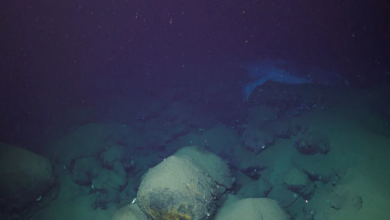
Scientists have uncovered a perplexing phenomenon known as ‘dark oxygen’, where oxygen is generated more than 13,000 feet below the ocean surface. A groundbreaking study published recently in Nature Geoscience has revealed that oxygen production is occurring in complete darkness, challenging the established scientific belief that oxygen is primarily produced via photosynthesis.
Dark Oxygen
This discovery is particularly intriguing because it suggests that oxygen is not being produced by plants, which require sunlight for photosynthesis.
“We have identified another source of oxygen on our planet, distinct from photosynthesis,” explained co-author Andrew Sweetman. He further speculated that this mysterious process could potentially alter our understanding of the origins of life on Earth.
Donald Canfield, a biogeochemist at the University of Southern Denmark, expressed fascination with the discovery, yet acknowledged its frustrating aspect due to the numerous questions it raises without providing clear answers.
The study elucidates that oxygen is emanating from metallic “nodules” resembling coal lumps, which split H2O molecules into hydrogen and oxygen.
“For aerobic life to have emerged on Earth, oxygen was necessary, and traditionally, we believed this oxygen originated from photosynthetic organisms,” Sweetman continued. “However, we now know that oxygen is being produced in the deep sea, where light does not penetrate. This prompts us to reconsider where aerobic life might have originated.”
This finding contradicts expectations because roughly half of Earth’s oxygen, according to the National Oceanic and Atmospheric Administration (NOAA), is sourced from the ocean, primarily through oxygen-producing organisms such as oceanic plankton, drifting plants, algae, and certain bacteria—all of which rely on photosynthesis that necessitates sunlight.
Sweetman emphasized the discovery’s potential implications, especially regarding the exploitation of these nodules, likening them to batteries embedded in rocks.
A similar occurrence was observed during fieldwork in 2013, while studying sea-floor ecosystems in the Clarion–Clipperton Zone—an area rich in metal nodules targeted for mining.
“I suddenly realized that for eight years, I had overlooked this potentially remarkable new process occurring 4,000 meters deep on the ocean floor,” Sweetman reflected.
This revelation opens new avenues for exploration and raises profound questions about the Earth’s deep-sea environments and their contributions to global oxygen levels.
No related posts.




